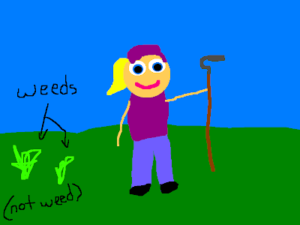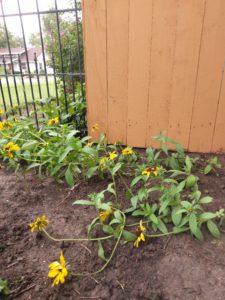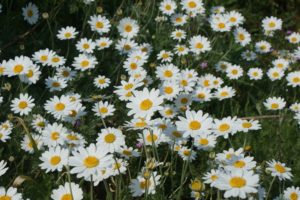Blooms and Believers
November 1, 2018
I’m always behind, always wishing I had more time to do a whole list of things – everything from cleaning out cabinets to buying Christmas presents, pulling weeds in the yard to visiting an old friend. Oh, and catching up my bookwork in preparation for the year end. Then there’s that pile downstairs of things from Mom’s house that needs attention. Ugh. There’s just too much to do.
Early this summer I planted some Black-Eyed Susan seeds and some Shasta Daisy seeds. I grew daisies when we lived in Nebraska and loved them. I knew it took time for them to grow, and at least two seasons for them to bloom, and I expected the same for the Black-Eyed Susans. My plan was to thin and transplant them when they got about two inches tall.
Well, as you probably guessed, they grew happily in their little spot, without my intervention until late summer. By then, the daisies were quite thick and growing well. I wondered if I could separate them without damaging them. The Susans, however, were quite tall, and had even started blooming.
 That’s when a little miscommunication happened with my lawn sprayer guy. The daisies looked like weeds, so he sprayed them.
That’s when a little miscommunication happened with my lawn sprayer guy. The daisies looked like weeds, so he sprayed them.
When your flower garden looks like a weed bed, it’s probably time to do something about it.
So, I finally moved outdoor work up higher on my priority list, found my gloves and went to work.
I wanted to see what daisies had survived, and then spread out the plants so that next year they would cover the whole space.
So I began by digging among the mound of daisies. I was surprised to discover that they had survived the spray because they were so thickly compacted with each other. It was easy to separate them and spread them out. Within a few weeks, healthy daisy plants covered the entire area, ready to bloom next year.

Then I separated the mound of Black-Eyed Susans. They were about 3 feet tall and blooming happily.
When I separated them out, they stayed healthy and blooming, but they fell over.
Not near as beautiful as they were when they were all together.
As we grow in our faith, we desperately need to stay tightly knit with other believers. When we do so, we are not near as vulnerable when the enemy tries to destroy us. We need each other to survive. If we stay together, we can eventually be strong enough to spread out a little and make a bigger impact on our neighborhoods, and communities.
But the goal is to bloom – not look like weeds. It’s our fragrance that draws someone near enough to hear the story of Jesus.
Once we are blooming, if we get to feeling like we can do it on our own and try to separate ourselves from other believers . . . our blossoms end up face down in the mud. Then we just get trampled on, and everyone thinks, “poor thing” instead of “Wow, look at that faith!”
In our country right now, more and more Christians are leaving church. Many things have led to the exodus: dissatisfaction with how things are being run, or fights over what style of music to sing, or what clothes to wear, or fear of being asked to do something, or annoyance over discussions of financial struggles, or disagreements with how to handle conflict, or disappointment with the failures of believers, or . . .
The end result?
We look like weeds, with our faces in the dirt.

It’s time to get back together, drink the living water that Jesus offers and feed ourselves on the Word of God.
So we can bloom.
And others will be attracted to our fragrance – and get close enough to us that we can tell the story of Jesus.
And churches full of God’s people will be beautiful again.



Inspiring story Lora!
Beautiful!!! In every way, thank you Lora 🙂
So true! Love this, Lora.
YES YES! Blacked eyed susan growing together was touching!